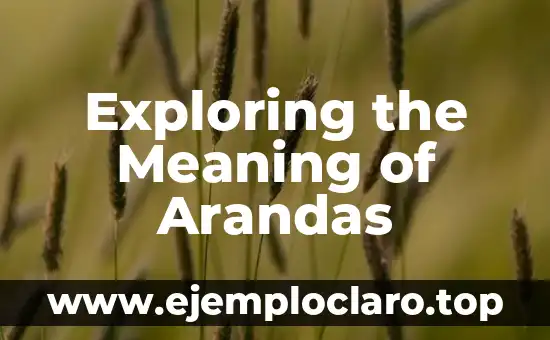In the realm of poetry, there exists a form that captures the essence of loss and mourning with profound depth. This poetic expression, often overlooked, holds a significant place in literary history. It is through this lens that we delve into the world of elegies, exploring their meaning, examples, and cultural significance.
What is an Elegy?
An elegy is a poem that reflects on loss, traditionally dealing with themes of mourning, grief, and remembrance. Characterized by a serious and solemn tone, it often expresses deep emotion, whether personal or universal. Elegies serve as a tribute to the departed, offering solace through poetic expression.
Historically, the elegy has roots in ancient Greek literature, where it was accompanied by music, played on the flute. Over time, it evolved, with notable examples including Thomas Gray’s Elegy Written in a Country Churchyard and Walt Whitman’s When Lilacs Last in the Dooryard Bloom’d.
The Role of Mourning in Literature
Mourning in literature transcends mere expression of sorrow; it becomes a bridge connecting the living with the past. Through this emotional journey, literature captures the human experience, offering catharsis and understanding. Poets use mourning to explore complex emotions, creating works that resonate universally.
The evolution of mourning in literature reflects societal changes, from traditional forms of remembrance to contemporary expressions of grief, illustrating its enduring relevance.
Examples of Elegies
Elegies have been crafted by poets across various eras, each adding unique depth to the genre. Notable examples include:
- Elegy Written in a Country Churchyard by Thomas Gray – A contemplation on mortality and the quiet lives of rural folk.
- In Memoriam A.H.H. by Alfred, Lord Tennyson – A personal reflection on grief and faith after losing a close friend.
- One Art by Elizabeth Bishop – A modern take on mastering loss through life’s experiences.
These works exemplify the elegy’s ability to capture the essence of loss and transformation.
The Emotional Depth of Elegies
Elegies connect deeply with readers by tapping into shared human experiences. They provide a platform for processing grief, offering comfort through collective understanding. The emotional resonance of elegies lies in their ability to transform sorrow into meaningful reflection, fostering empathy and healing.
Characteristics and Famous Poets of Elegies
Elegies are marked by several key characteristics:
– Structure: Often written in quatrains with a consistent rhyme scheme.
– Tone: Serious and contemplative.
– Themes: Focus on loss, memory, and the transience of life.
Renowned poets known for their elegies include:
– Thomas Gray
– Alfred, Lord Tennyson
– Walt Whitman
Their contributions have enriched the literary landscape, ensuring the elegy’s enduring presence.
Cultural Significance of Elegies
Elegies hold cultural significance as they provide insight into societal values and collective experiences. They serve as historical documents, capturing the spirit of their time and offering solace in times of grief. By exploring elegies, we gain a deeper understanding of human emotions and cultural responses to loss.
The Purpose of Elegies
Elegies serve multiple purposes, primarily as a means to process and express grief. They honor the deceased, offer comfort to the bereaved, and reflect on the human condition. Beyond personal loss, elegies address broader themes, making them a versatile and enduring poetic form.
Lamentations in Poetry
Lamentations, akin to elegies, are poetic expressions of mourning. They allow poets to voice sorrow, whether personal or communal. Through lamentations, poets explore themes of loss, memory, and the impact of absence, connecting with readers on a profound level.
The Evolution of Elegies Over Time
The elegy has evolved significantly since its origins in ancient Greece. From accompanied music to modern free verse, its form has adapted to cultural and societal changes. Despite these changes, the elegy’s core purpose—to reflect on loss—remains unchanged, ensuring its relevance across generations.
The Meaning of Elegy
The term elegy originates from the Greek word elegos, meaning mournful song. This etymology reflects the poem’s purpose: a solemn reflection on loss. The elegy’s meaning has expanded to include not only mourning but also celebration of life, making it a rich and complex poetic form.
The Origin of the Word Elegy
The word elegy traces its roots to ancient Greece, where it was associated with mournful songs accompanied by the flute. Over time, the term evolved, influenced by Roman and later European literary traditions, shaping the elegy into the form we recognize today.
Elegiac Couplets and Their Influence
Elegiac couplets, consisting of a hexameter followed by a pentameter, were popularized by Roman poets like Ovid. This structure, known as elegiac meter, became synonymous with the genre, influencing later poets and cementing the elegy’s place in literary history.
How Has the Elegy Evolved in Modern Literature?
In modern literature, the elegy has embraced diverse forms and themes, moving beyond traditional structures. Contemporary poets explore personal and global losses, such as the COVID-19 pandemic, using free verse and experimental styles to express mourning, thus revitalizing the genre for new audiences.
Writing an Elegy: Tips and Examples
Crafting an elegy involves capturing the essence of loss while offering hope. Focus on personal emotions, use vivid imagery, and reflect on memories. Consider the following example:
*In twilight’s hush, where shadows dance,
A memory lingers, a gentle romance.
Though time may heal, it never fades,
In heart’s depths, love’s light forever stays.*
By following these tips, one can create a meaningful elegy that resonates deeply.
INDICE






